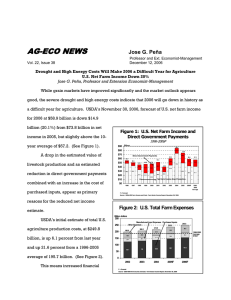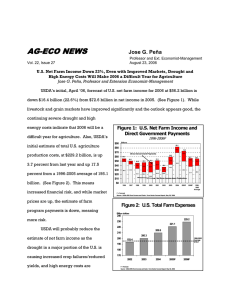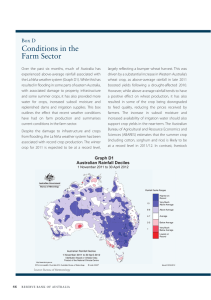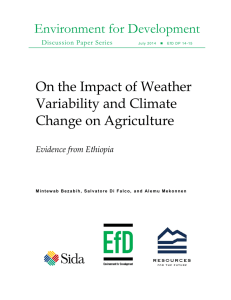Box A: The Recovery from the Drought
advertisement
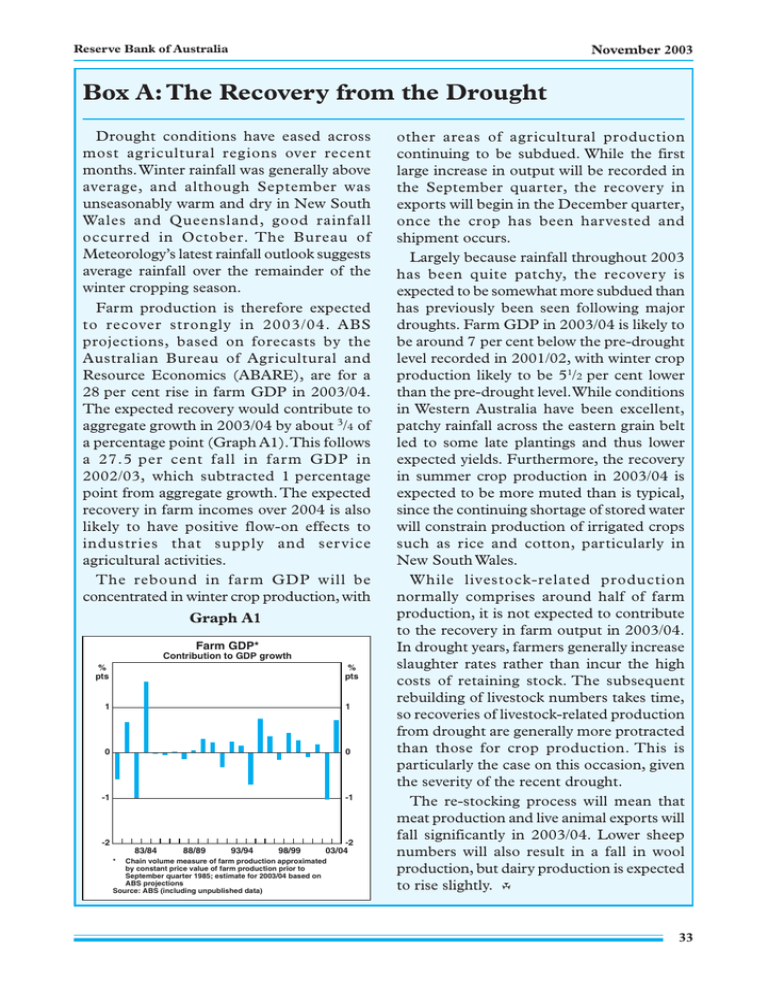
Reserve Bank of Australia November 2003 Box A: The Recovery from the Drought Drought conditions have eased across most agricultural regions over recent months. Winter rainfall was generally above average, and although September was unseasonably warm and dry in New South Wales and Queensland, good rainfall occurred in October. The Bureau of Meteorology’s latest rainfall outlook suggests average rainfall over the remainder of the winter cropping season. Farm production is therefore expected to recover strongly in 2003/04. ABS projections, based on forecasts by the Australian Bureau of Agricultural and Resource Economics (ABARE), are for a 28 per cent rise in farm GDP in 2003/04. The expected recovery would contribute to aggregate growth in 2003/04 by about 3/4 of a percentage point (Graph A1). This follows a 27.5 per cent fall in farm GDP in 2002/03, which subtracted 1 percentage point from aggregate growth. The expected recovery in farm incomes over 2004 is also likely to have positive flow-on effects to industries that supply and ser vice agricultural activities. The rebound in farm GDP will be concentrated in winter crop production, with Graph A1 Farm GDP* Contribution to GDP growth % pts % pts 1 1 0 0 -1 -1 -2 83/84 * 88/89 93/94 98/99 -2 03/04 Chain volume measure of farm production approximated by constant price value of farm production prior to September quarter 1985; estimate for 2003/04 based on ABS projections Source: ABS (including unpublished data) other areas of agricultural production continuing to be subdued. While the first large increase in output will be recorded in the September quarter, the recovery in exports will begin in the December quarter, once the crop has been harvested and shipment occurs. Largely because rainfall throughout 2003 has been quite patchy, the recovery is expected to be somewhat more subdued than has previously been seen following major droughts. Farm GDP in 2003/04 is likely to be around 7 per cent below the pre-drought level recorded in 2001/02, with winter crop production likely to be 51/2 per cent lower than the pre-drought level. While conditions in Western Australia have been excellent, patchy rainfall across the eastern grain belt led to some late plantings and thus lower expected yields. Furthermore, the recovery in summer crop production in 2003/04 is expected to be more muted than is typical, since the continuing shortage of stored water will constrain production of irrigated crops such as rice and cotton, particularly in New South Wales. While livestock-related production normally comprises around half of farm production, it is not expected to contribute to the recovery in farm output in 2003/04. In drought years, farmers generally increase slaughter rates rather than incur the high costs of retaining stock. The subsequent rebuilding of livestock numbers takes time, so recoveries of livestock-related production from drought are generally more protracted than those for crop production. This is particularly the case on this occasion, given the severity of the recent drought. The re-stocking process will mean that meat production and live animal exports will fall significantly in 2003/04. Lower sheep numbers will also result in a fall in wool production, but dairy production is expected to rise slightly. R 33
